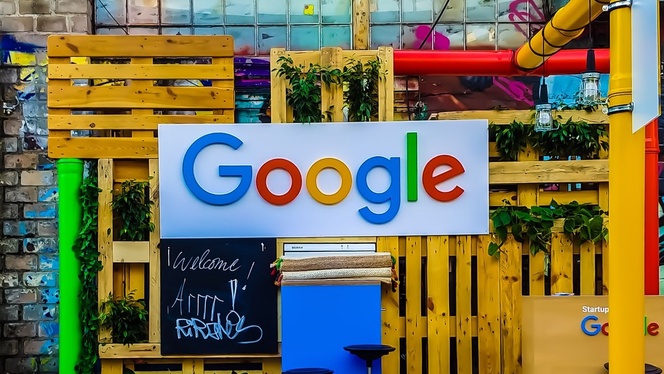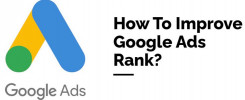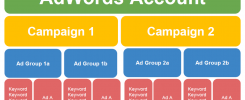Google Ads has been around for over 20 years already, and it’s still firmly holding onto its spot as the most popular digital advertising platform of them all. There is a good reason for that: the platform allows advertisers to appear on the world’s most used search engine, as well as Youtube, Gmail, and hundreds of Google’s partners.
All that makes Google ads a perfect place to focus all your paid campaigns. That said, advertising on Google Ads is not as easy as it may look. There are some things you need to be especially mindful of when setting up and optimizing campaigns.
Ready to learn all about them? Let’s go through the 7 Google Ads best practices, and try to make your life with the platform a whole lot easier!
1. Take care of negative keywords
There’s a trap many of us tend to fall into: thinking that our work ends with setting up the campaign and leaving the rest up to the Google ads platform. Unfortunately, this approach most often leads to burning through the budget and falling down on SERP (search engine results page).
Optimization is extremely important, especially at the beginning of running your Google ads campaign. But at this time, optimization isn’t really about searching for new keywords to add to the list of phrase match. In fact, it’s the opposite.
How Google ads negative keywords work

Negative keywords are the terms that prevent your ad from being triggered when a user types them into the search engine. And they should be your main focus, particularly in those first few weeks.
Let’s say your company sells marketing software. The first things you’d want to add to the negative keyword list of your Google ad campaign are terms like “free” or “development”.
This way, you’re making sure to show your search ads to users who are most likely to be interested in what you actually offer.
At the same time, you will be excluding irrelevant search terms, such as “marketing software free”.
Search intent is a tricky thing to pinpoint. Especially when you’re using broad match keywords in your Google ads (as opposed to the exact match). This is exactly why you should always remember to regularly check the search terms that trigger your ad and get rid of those that are irrelevant to what you’re advertising.
2. Keep track of your Quality Score
Google Ads’ Quality Score has been the topic of many discussions among marketers, with some arguing that its role in a campaign’s performance is way overrated. And while that may be true to some extent, it doesn’t change the fact that the Quality Score is one of the best indicators of whether Google “likes” your ads or not.
How Google ads Quality Score works

Quality Score allows you to see how well will your ad rank compared to similar competing advertisements. The score is given on a scale of 1 to 10. Google analyzes several specific factors to estimate this:
- Expected clickthrough rate;
- Ad relevance;
- Landing page experience.
Fortunately, Google is kind enough not to leave you in the dark on this matter.
Google Ads dashboard provides users with an additional status for each factor. As such, each of the three metrics can be estimated as “above average”, “average”, or “below average”. If you see that your Google ad has been marked as “below average”, you should start verifying what exactly seems to be the problem.
Pro tip: It might also be a good idea to create a new ad group, in order to ensure a better fit between the targeted keywords and ad groups.
Generally, the more specific you are with the search terms, the happier Google should be about ad relevance. The changes don’t have to be huge. Something as simple as fixing your landing page loading time can easily boost your Google ads Quality Score.
Let’s say you see a quality score of 4/10 next to one of your keywords. How can you improve it? Simply by going through all the three factors one by one.
Check what the expected CTR is and how different it is from the real one. Double-check the settings you’ve created for ad relevance. Go through the landing page to which the ad directs and try to single out any inconsistencies.
This way, you’ll be able to spot what needs to be changed and adjust immediately for the best results.
Make sure to check Google’s guidelines on the matter and see how you can keep improving the Quality Score with every campaign.
3. Make targeting as detailed as possible
It should be your unconscious standard practice at this point to tailor your ad to your potential clients. Aside from the obvious possibility to target your audience depending on their age, gender or location, Google ads allow you to customize and segment your campaign even further.
Audience targeting
When it comes to your audience, you have the possibility to target users based on some pretty specific factors, such as:
- their interests
- their habits
- their most popular search queries
- their interaction with your website
You can also create custom audience segments by inserting keywords based on your potential customers’ interests, URLs, and apps that they’re likely to use or that are similar to yours. This way, you’re able to target a very narrow audience, yet the one that is highly likely to engage with your product.
Content targetting
But that’s not the only thing Google has in store. It also enables you to use content targeting. Among other things, it lets you choose the topics related to those of the websites your ads appear on, as well as specific placements (i.e websites or apps on the Google Display Network) where you want the ads to show.
Editor’s note: This form of online advertising largely depends on third-party cookies and will soon become inactive for Google ads users. With third-party cookies, paid ads can use information about the target audience obtained from third-party websites to match the search traffic best.
Once these cookies are banned, marketers will only be able to rely on the first-party cookies, i.e. the user information gathered directly on their own websites.
When it comes to targeting, it’s also important to make use of exclusions and filter out the topics or types of content that you don’t want your marketing campaign to be associated with.
Just like with negative keywords, you should regularly check the placements where your ads appear and rid of those that are irrelevant or perform badly.
4. Spend extra time on the creatives
Setting up a new campaign takes a lot of research. There are many elements of the Google ads campaign you need to take care of:
- Targeting options
- Ad group levels
- Specific keywords
- Bidding strategy
So many, in fact, that it’s fairly easy to treat the actual copy and images for your Google ads as an afterthought.
That approach might have worked a couple of years ago when users weren’t bombarded by ads on every corner of the internet. Now it takes a lot more effort to stand out from the crowd.
So, if you notice that your campaign isn’t performing well, the problem might not lay in the campaigns’ settings, but rather in blandly looking (or sounding) ads.
How to create Google ads creatives that convert
Your best indicator that something is not right with your ads’ creatives is a low CTR. Fortunately, there is a handful of things you could try and do to address this issue. Here are some Google ads best practices for creatives:
Check if your visuals are in line with Google’s best practices, and make sure the designers at your company always follow them.

- Don’t bet it all on one ad — prepare different sets of creatives and test them out to see which ones perform best and continue to improve from that. Try running A/B tests or rely on Google’s custom experiments to help you decide on a winning variation.
- Under no circumstances, do not reuse the same copy and visuals over and over again!
- Stay creative throughout the process and try to have fun with your campaigns. It pays out in the long run!
- Prepare high-quality landing pages
We briefly mentioned the importance of landing pages when it comes to the Quality Score, but this really is a topic that needs its own discussion. You can have a perfectly tailored campaign, but if it leads users to a mediocre page, then it’s not going to bring the results it should.
Here, a high bounce rate is your best indicator that it might be time to re-evaluate your landing pages.
How to create a perfect landing page to direct your Google ads to
First off, remember that creating an ad-friendly landing page comes down to more than just the appearance.
One factor that is sometimes overlooked here is loading speed. Google’s study tells us that “the probability of bounce increases 32% as page load time goes from 1 second to 3 seconds.” PageSpeed Insights is your best friend here, and you should always aim for a score of 80 or more for the sake of all your PPC efforts.
Relevance to the user should also be a top priority when using a given landing page for your campaigns, and this is something that Google tends to be very strict about. As an absolute must, you should always include your campaign’s keywords on the landing page.
Also, there is another catch. Using an already existing page on your website as a landing page for your campaign might seem like a good idea. Yet, you always double-check for any information featured on the page that may not be relevant to what you’re advertising in a given campaign. If there’s too much of such content — better create a brand new landing from scratch.
Being straightforward is your best bet here, which is why landing pages created entirely for the purpose of PPC campaigns tend to work best.
6. Keep your account organized
This one often gets overlooked amongst all the Google Ads best practices. After all, how hard can it be to organize campaigns?
And that’s true, it’s not really rocket science. But as your campaigns grow in size and number, you’ll start to see how important it is to keep a consistent, clean structure across the entire account from the very beginning.
How to keep track of all your multiple ads
Starting from the campaign level, make sure all your campaigns are labelled correctly. By this, we mean avoiding names like “Promo campaign 1” or “Search2”. Why? Because even though such labels make perfect to you when you have 3 or 4 campaigns running, it will quickly get confusing as you add more to it.
Therefore, it is best to always specify the campaign type and follow with a specific campaign name.
For example, your ad campaign titles could look something like this:
[Search] Summer promotion 2022 – USA
[Shopping] Black Friday deal ‘22 – EMEA
[Display] New collection summer ‘22 – UK
The same thing should happen at the ad group level.
The general rule when it comes to a Google ads account organization, regardless of the structure you choose to use, is to be as clear as possible and declutter your campaigns on a regular basis.
It will save you lots of headaches in the future.
7. Take all Google Ads tips with a grain of salt

… Okay, we know it’s a weird thing to say in an article that’s essentially giving you a bunch of different Google Ads tips. But hear us out on this one!
There are some universal tips on how to run Google Ads campaigns that work for the vast majority. Yet, they shouldn’t be treated as a clear-cut set of rules that everyone should abide by.
Of course, most of the tips you’ll read from experienced marketers will be relevant and helpful, but some may turn out to be a flop.
And it does not necessarily mean that you have done something wrong, especially if you followed the guidelines to the “T”.
Every business case is unique and so should be every Google ad
Not all of the tips are going to make sense in your specific case. And that’s alright!
You should always evaluate the advice in the context of your goals and the business itself. For example, your friend who works in retail might have told you that display ads are doing wonders for their marketing efforts, but it can turn out to be an entirely different story when you’re trying to reach your B2B customers.
You should always make sure to test things out to find out what actually works and find the right balance between general tips and your business needs.
Key takeaway
As Google Ads grew and the digital landscape changed, it became increasingly difficult to get your message across. That’s why, first and foremost, you should focus on making your campaigns relevant to the users.
Do your best to provide a consistent experience — starting from keywords, through ad copy, visuals, and landing pages. Remember to keep your account organized, and optimize your campaigns on a regular basis to make them as specific as possible.
Best of luck on your journey through the world of digital marketing!


